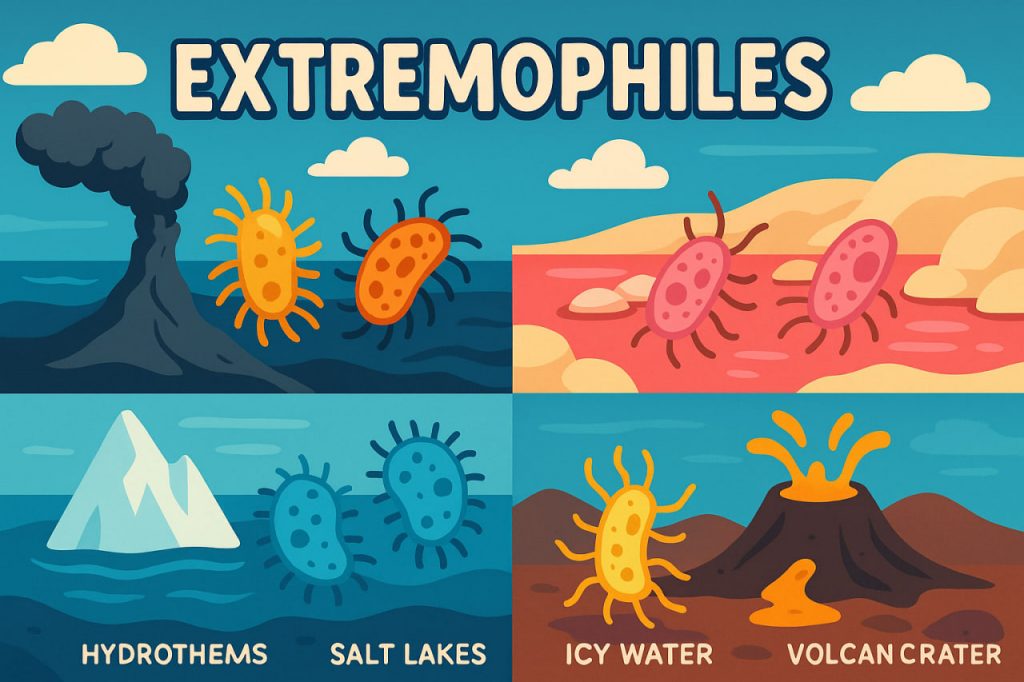Extremophiles are organisms that thrive in environments once thought too harsh to support life. The name comes from Latin: extremus (extreme) and Greek philos (lover), meaning “lovers of extremes.” These microorganisms survive under extreme conditions of temperature, pressure, acidity, salinity, or radiation — conditions that would kill most other forms of life. Studying extremophiles not only expands our understanding of biology but also provides insights into the origins of life and the possibility of life beyond Earth.
Types of Extremophiles
- Thermophiles – Live in extremely hot environments, such as hot springs and hydrothermal vents, often at temperatures above 60–80°C.
- Psychrophiles – Thrive in freezing environments, such as polar ice caps and deep oceans, at temperatures below 0°C.
- Halophiles – Adapted to highly salty environments, such as the Dead Sea and salt flats.
- Acidophiles – Survive in very acidic conditions, like volcanic lakes, with pH values close to 0.
- Alkaliphiles – Thrive in highly alkaline (basic) environments, such as soda lakes with pH above 9.
- Barophiles (piezophiles) – Live under immense pressure in the deep ocean trenches, where pressure exceeds 1,000 times that at sea level.
- Radiophiles – Resistant to extreme levels of radiation that would destroy DNA in most organisms.
Adaptations of Extremophiles
- Special proteins and enzymes that remain stable under extreme heat or cold.
- Unique cell membranes that resist damage from high pressure or salinity.
- Efficient DNA repair systems that protect against radiation damage.
- Metabolic flexibility, using unusual chemical reactions (like sulfur or methane metabolism) instead of oxygen.
Why Extremophiles Are Important
- Biotechnology – Enzymes from thermophiles are used in PCR (DNA replication) and industrial processes.
- Medicine – Studying their stability may inspire new drugs or protective compounds.
- Environmental science – Some extremophiles help clean up oil spills or toxic waste.
- Astrobiology – They serve as models for potential extraterrestrial life on Mars, Europa, or Enceladus.
- Understanding evolution – They may resemble some of the earliest organisms on Earth.
Examples of Extremophiles
- Deinococcus radiodurans – survives intense radiation.
- Thermus aquaticus – source of the enzyme Taq polymerase, used in PCR.
- Halobacterium salinarum – thrives in salt lakes.
- Pyrolobus fumarii – grows at 113°C in hydrothermal vents.
Conclusion
Extremophiles reveal the incredible adaptability of life. By thriving in conditions once considered uninhabitable, they challenge our definition of what it means to be “alive.” These organisms not only help us understand Earth’s extremes but also open the door to imagining life in distant worlds.
Glossary
- Extremophiles – organisms that survive in extreme environments.
- Thermophile – heat-loving microorganism.
- Psychrophile – cold-loving microorganism.
- Halophile – salt-loving microorganism.
- Astrobiology – the study of life in the universe.


